how triplex mud pump works factory

Since the modern mud (or slush) pump was built approximately 60 years ago, the industry has widely accepted the three cylinder or triplex style pump. Triplex mud pumps are manufactured worldwide, and many companies have emulated the original design and developed an improved form of the triplex pump in the past decade.
As in all single acting pumps, the piston exerts a load on the crankshaft. The load is then transmitted to the crankshaft main bearings, which are set in their retainers in the pump frame or housing (see Figure 2).
The middle piston often exerts seven times greater bending moment on the crankshaft than either of the outer two pistons, causing the crankshaft to bend or flex. Where the force is directed along either of the outer two piston rods to their respective outer two crankshaft cams, the force is close to the bearings and the bending moment is considerably less. However, when the center piston is under pressure and the forces are directed down the middle connecting rod to the central cam, the distance of that central cam from either main bearing is large (sometimes 850 mm or 33 in), thus allowing for a large bending moment and resulting in significant flex in the crankshaft.
That the crankshaft is subjected to extreme bending loads and stress concentration areas is one of the drawbacks of the triplex design. Experience shows that all triplex pumps eventually exhibit crankshaft cracking if the operator is using the pump at higher loads and pressures, which is now common as drilling contractors are facing deeper, longer sections to drill. In the past, drillers rarely pushed the performance limitations of triplex pumps; 5,000 psi rated pumps were usually only operated at a maximum of 2,800 psi 90 percent of the time. Now contractors are encouraged to run pumps at the much higher pressures around 4,300 psi, only leaving a safety margin below the pressure relief valve setting. This means the crankshaft is subjected to extended maximum load, which inevitably shortens time to failure, probably exponentially.
Some may suggest that an increase in the number of pistons to improve flow rate will also reduce piston load. Although the middle piston load may be reduced for the same overall pump horsepower, the distance from the main bearings to the middle cam increases, which is not advantageous. For example, a five cylinder pump with the middle cam 50 in from the main bearing will have the same bending moment as a triplex with a 30 in middle cam to bearing distance. However, installing bearings close to the cams can reduce the cyclic failure problems on any pump.
For the drilling industry, the problem with this design is that few have managed to design a crankshaft where bearings can be installed anywhere other than at the crankshaft ends. Consequently, most pumps currently available have crankshafts unsupported close to the middle cam. With the middle area of the crankshaft unsupported, crankshaft failure is inevitable.
A triplex pump with a large load acting on the middle of the crankshaft of approximately 120,000 lbs and a typical distance of about 30 in from middle cam to either main bearing will exert a bending moment of 300,000 lb-ft on the crankshaft adjacent to the main bearing. If the bearing is not spherical, the bending moment where the shaft meets the bearing will coincide with the point on the shaft that the crank can no longer bend because it is restricted by the fixed bearing, which creates huge stress concentration. That load comes and goes cyclically every revolution of the pump. If the pump is rotating at 100 rpm or strokes, then in one week of drilling the crank will experience one million cycles of 300,000 lb-ft effectively switching on and off.
Another symptom of crankshaft deflection or bending is abnormal main gear wear patterns. The high unsupported load in the middle of the crankshaft effectively bows the shaft and consequently the bull gear is moved off alignment, and a strange wear pattern may appear on the gears. Although this is an undesirable occurrence, it is of little importance compared with crankshaft failure. It does explain abnormal wear on a pump used continuously at high pressure.
The case for welding or casting a crankshaft is arguable. While the cast crankshaft is strong and sometimes quite reliable, it is easy for casting anomalies like porosity and inclusions to be undetectable in inspection. Welded crankshafts always have a problem with the weld of the cams so close to a large diameter change, which can create stress concentration-induced problems. One way of avoiding both these problems is to have a modular crankshaft, which is assembled and disassembled without any welding or the need for subsequent heat-treating during manufacturing. All the crank components would be assembled from high quality forged parts that will last longer in any application and are unlikely to ever fail under normal or extreme conditions so long as the crankshaft is supported properly. (Figure 6 shows close bearing proximity to cams and spherical bearings.)
A pump that addresses these issues may be the solution. A quadraplex has minimal bending moments due to the close proximity of the main bearings to every cam (see Figure 7).
A fully assembled crankshaft is the best and only way to install multiple bearings close to the cams. Even though there is minimal flexure in this design, spherical bearings eliminate stress concentration or point loading. With cam to bearing distances no more than 10 in, the bending moment on a quadraplex crankshaft will be one quarter that of the triplex or five cylinder pump.
In an environment where few advances have been made in mud pump technology in the last 50 years, designers in the mud pump sector of the drilling industry can develop workable solutions to the problems and limitations inherent in triplex pumps.
The future of mud pump design will involve a solution to excessive crankshaft bending moments and address other needed areas of improvement, including piston speed, module replacement in the field, quality of discharge pressure and smoothness of flow-all combined with ease of transportation.

Positive displacements pumps are generally used on drilling rigs to pump high pressure and high volume of drilling fluids throughout a drilling system. There are several reasons why the positive displacement mud pumps are used on the rigs.
The duplex pumps (Figure 1) have two cylinders with double acting. It means that pistons move back and take in drilling mud through open intake valve and other sides of the same pistons, the pistons push mud out through the discharge valves.
When the piston rod is moved forward, one of intake valves is lift to allow fluid to come in and one of the discharge valve is pushed up therefore the drilling mud is pumped out of the pump (Figure 2).
On the other hand, when the piston rod is moved backward drilling fluid is still pumped. The other intake and discharge valve will be opened (Figure 3).
The triplex pumps have three cylinders with single acting. The pistons are moved back and pull in drilling mud through open intake valves. When the pistons are moved forward and the drilling fluid is pushed out through open discharge valves.
On the contrary when the piston rods are moved backward, the intake valve are opened allowing drilling fluid coming into the pump (Figure 6). This video below shows how a triplex mud pump works.
Because each pump has power rating limit as 1600 hp, this will limit capability of pump. It means that you cannot pump at high rate and high pressure over what the pump can do. Use of a small liner will increase discharge pressure however the flow rate is reduces. Conversely, if a bigger liner is used to deliver more flow rate, maximum pump pressure will decrease.
As you can see, you can have 7500 psi with 4.5” liner but the maximum flow rate is only 297 GPM. If the biggest size of liner (7.25”) is used, the pump pressure is only 3200 psi.
Finally, we hope that this article would give you more understanding about the general idea of drilling mud pumps. Please feel free to add more comments.

The NOV FC-1600 Triplex Mud Pump is made of rugged Fabriform construction and designed for optimum performance under extreme drilling conditions. It is compact and occupies less space, yet delivers unequaled performance. The pumps are backed by several decades of design and manufacturing experience, and are considered leaders in the field.
NOV FC-1600 Triplex Mud Pump is conservatively rated at relatively low rpm. This reduces the number of load reversals in heavily stressed components and increases the life of the fluid end parts through conservative speeds and valve operation.
The NOV FC-1600 Triplex Mud Pump design provides an inherently balanced assembly. No additional counterbalancing is required for smooth operation. No inertia forces are transmitted to the pumps’ mountings.
A Triplex Mud Pump sometimes referred to as a drilling mud pump or mud drilling pump. NOV FC-1600 Triplex Mud Pump is a reciprocating piston/plunger pump designed to circulate drilling fluid under high pressure (up to 7,500 psi) down the drill string and back up the annulus. A mud pump is an important part of the equipment used for oil well drilling.
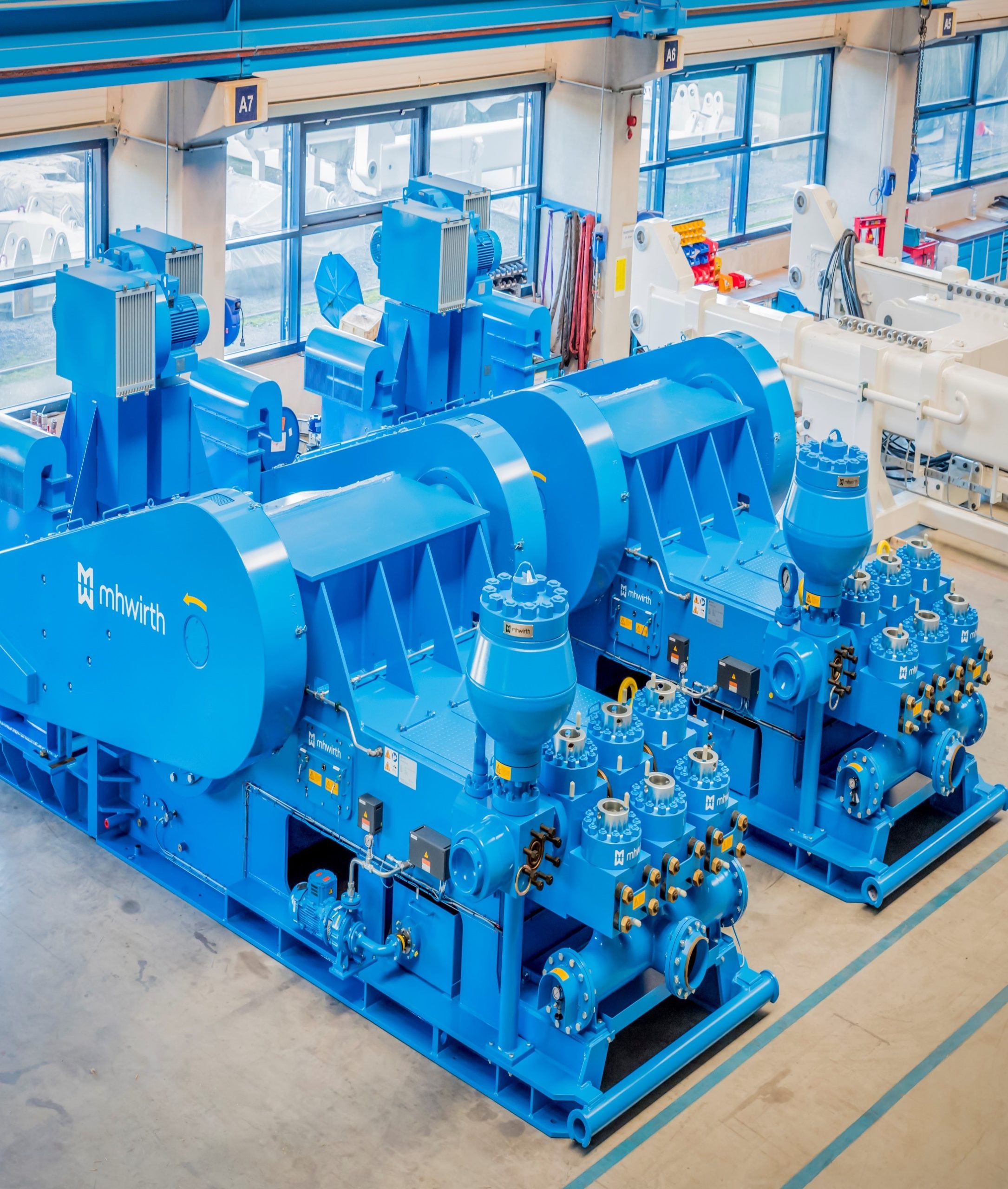
Comprehensive testing, performance evaluation and documentation done at Ingersoll-Rand manufacturing plant, Garland, Texas. Results in adoption of the Centerline pump as an optional offering on Ingersoll-Rand drilling rigs
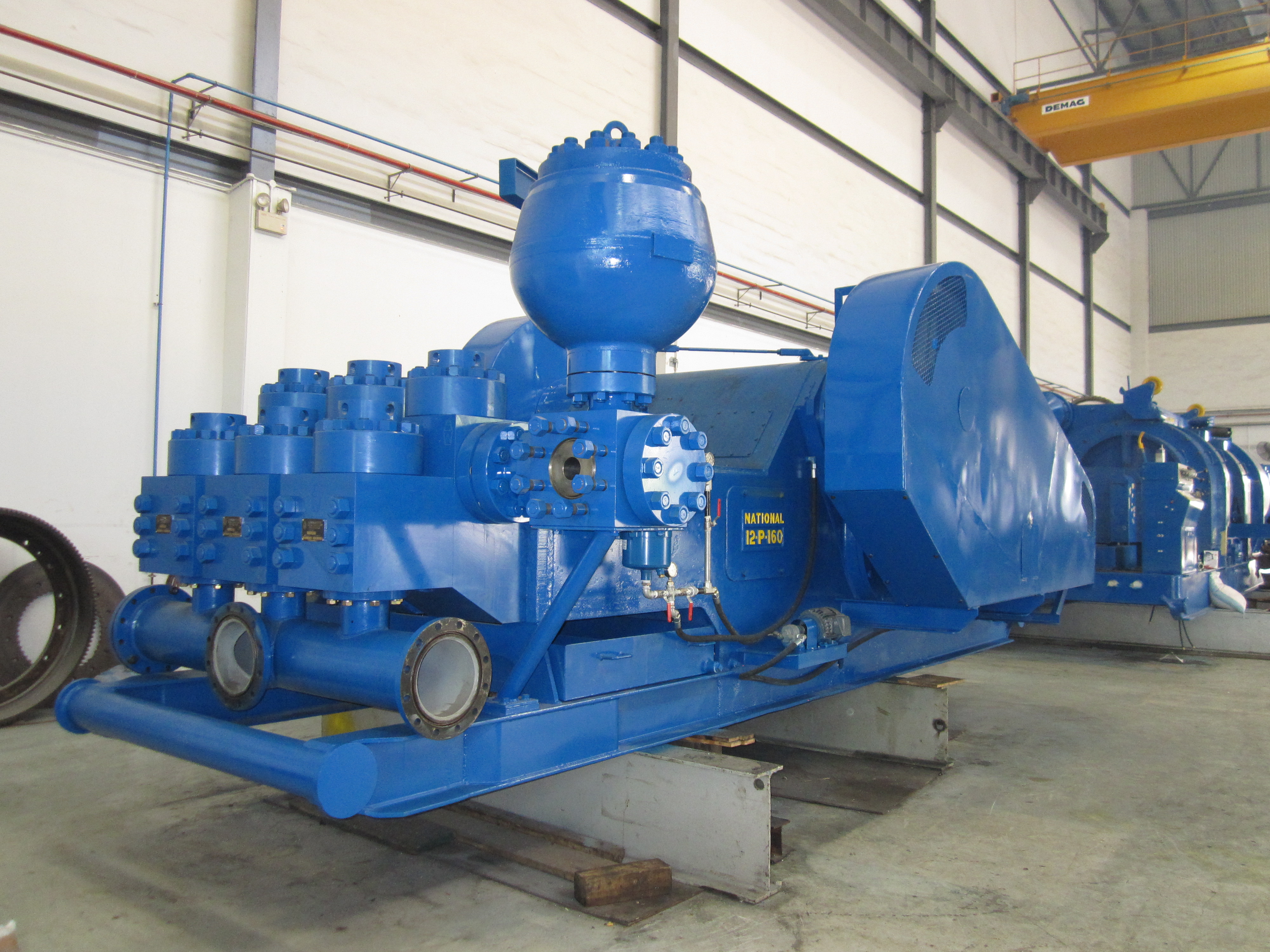
Bruce Suggs, vice president of marketing and sales for White Star, speaks with DC editorial coordinator Katherine Scott about White Star’s quadraplex mud pump at its headquarters in Waller, Texas, on 17 February.
Drilling Contractor visited the manufacturing facility of White Star Pump Company in Waller, Texas, on 17 February to view a demonstration of the company’s quadraplex mud pump, which was designed to address the challenges of the conventional triplex pump.
“After working on all the different brands of (triplex) pumps, it became evident that they all had the same common issues,” said Bruce Suggs, vice president of marketing and sales for White Star. “(We) tried to build a triplex and ended up with the Quatro.”
Instead of taking an existing triplex pump and trying to make it better, White Star approached the project with a clean-sheet design. The Quatro pump features a width of only 82 in. and easily fits on a standard-width trailer, a potential advantage in areas with limited space, such as on offshore rigs and in shale plays like the Marcellus. With the fluid modules sitting inside the frame, change-out time can be reduced to 23 minutes versus up to 10 hours for conventional triplex pumps. The quadraplex pump also uses a fully assembled crankshaft that requires no castings or welding. Using a crankshaft that is fully assembled and supported by modern bearing placement dramatically reduces crankshaft bending and cracking.
Additionally, the Quatro is equipped with two pulsation dampeners, one for each pair of pistons, unlike the triplex, which carries only one. This allows mud to be dampened before it gets to the strain across, creating a quieter, smoother fluid flow and reducing vibrations.
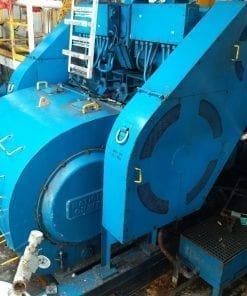
Bruce Suggs, vice president of marketing and sales for White Star, speaks with DC editorial coordinator Katherine Scott about White Star’s quadraplex mud pump at its headquarters in Waller, Texas, on 17 February.
Drilling Contractor visited the manufacturing facility of White Star Pump Company in Waller, Texas, on 17 February to view a demonstration of the company’s quadraplex mud pump, which was designed to address the challenges of the conventional triplex pump.
“After working on all the different brands of (triplex) pumps, it became evident that they all had the same common issues,” said Bruce Suggs, vice president of marketing and sales for White Star. “(We) tried to build a triplex and ended up with the Quatro.”
Instead of taking an existing triplex pump and trying to make it better, White Star approached the project with a clean-sheet design. The Quatro pump features a width of only 82 in. and easily fits on a standard-width trailer, a potential advantage in areas with limited space, such as on offshore rigs and in shale plays like the Marcellus. With the fluid modules sitting inside the frame, change-out time can be reduced to 23 minutes versus up to 10 hours for conventional triplex pumps. The quadraplex pump also uses a fully assembled crankshaft that requires no castings or welding. Using a crankshaft that is fully assembled and supported by modern bearing placement dramatically reduces crankshaft bending and cracking.
Additionally, the Quatro is equipped with two pulsation dampeners, one for each pair of pistons, unlike the triplex, which carries only one. This allows mud to be dampened before it gets to the strain across, creating a quieter, smoother fluid flow and reducing vibrations.

triplex mud pumps and triplex mud pump parts meet the industry standards established by the American Petroleum Institute (API). As a global supplier of quality oilfield equipment to the oil and gas industry, we ship our products around the world.
Besides triplex mud pumps and triplex mud pump parts, we supply drilling rigs, workover rigs, top drives, drilling equipment, blowout preventers, BOP control systems, choke and kill manifolds, well service pumps for well cementing and hydraulic fracturing, wellhead equipment, casing heads, tubing heads, X-mas trees, FC type gate valves, etc. Please visit our company website
We supply unitized mud pump packages driven by DC or AC electric motors or diesel engines for electric and mechanical drilling rigs. The client can select DC or AC motors and diesel engine brands such as Caterpillar, Detroit, Cummins or others. Our unitized mud pump packages including everything on the skid and usually they are ready to work at delivery.

DRILLMEC’s GD Series is the new generation of Gear Driven Triplex Mud Pumps in the ranging from 1600 to 2400 hp for both onshore and offshore drilling operations.
The direct gear driven transmission between the AC motor and the cranshaft together with the top mounted configuration gives to the GD Series Mud Pumps a very compact design despite their high volume and high pressure capabilies.
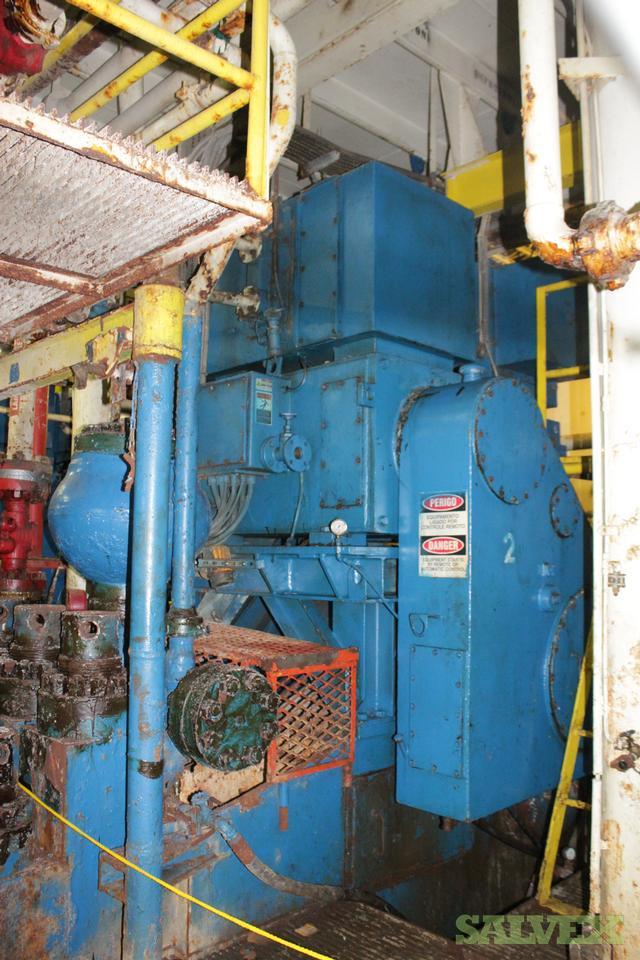
The policy set forth below outlines the personal data that Power Zone Equipment may collect, how Power Zone Equipment uses and safeguards that data, and with whom we may share it. This policy is intended to provide notice to individuals regarding personal data in an effort to be compliant with the data privacy laws and regulations of the jurisdictions in which Power Zone Equipment operates.
If you have a comment, question, or complaint about how Power Zone Equipment is handling your personal data, we invite you to contact us in order to allow us to resolve the matter. In addition, individuals located in the EU may submit a complaint regarding the processing of their personal data to the EU data protection authorities (DPAs). The following link may assist you in finding the appropriate DPA:http://ec.europa.eu/justice/data-protection/bodies/authorities/index_en.htm.
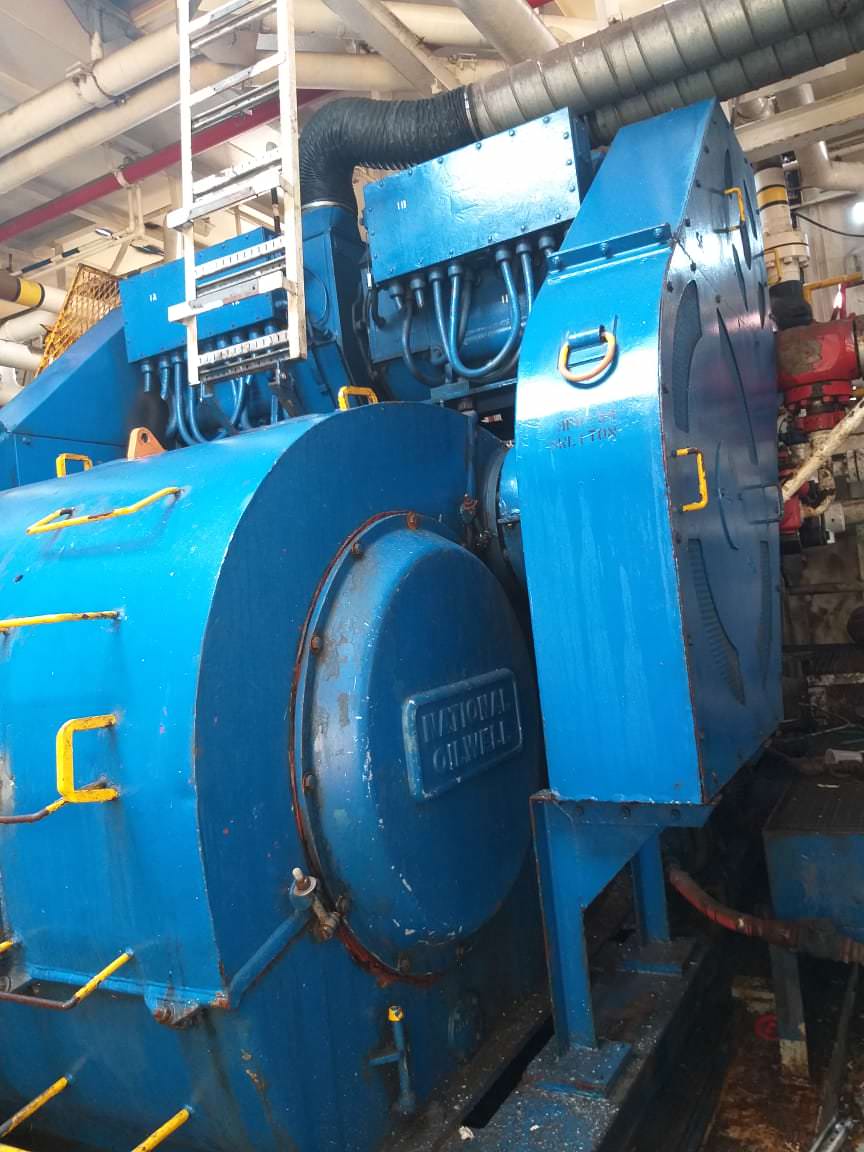
There are three types of mud pumps, depending on the type of client and the size they want. For general, mud pumps, there are three basic types of mud pumps, depending on the type of client and budget. The piston pump is another compressed mud pump, which is a pushed electric compressor mud pumps and by compressed air.@@@@@
Electric mud pumps are largely divided into three categories, among them the electric mud pumps and the semi-trash mud pumps. The piston inflated mud pumps are also classified in terms of the type of mud pumps, among them are electric mud pumps and semi-trash mud pumps. In addition, the piston inflates mud and mud pumps will be inflated by the piston, which is inflated mud pumps.




 8613371530291
8613371530291